Have you ever encountered a decomposing log in the forest with a striking greenish-blue stain? It’s easy to pass by or just think that someone was out in the woods with a paintbrush and can of turquoise paint for some weird reason. But actually, this captivating wood discoloration is caused by a unique and enchanting mushroom called the green elfcup (Chlorociboria aeruginascens).
Woodworkers treasure green elfcap-infected wood because the naturally formed green-blue coloring adds so much dimension to an art piece. Green elf caps aren’t just for dying wood, though. They are also used to dye cloth and yarn, and are being researched for many other uses, including as an algaecide, termite repellant, and semiconductor!
- Scientific Name: Chlorociboria aeruginascens, Chlorociboria aeruginosa
- There are two green elfcap species and they are nearly identical to the naked eye. For the purposes of this guide, we are combining the two together since their physical identification is the same. Microscopic examination is necessary to differentiate between the two.
- Common Names: Green elfcup, green wood cup, green stain fungus, turquoise elfcup, blue stain fungus
- Habitat: Decaying logs
- Edibility: Inedible
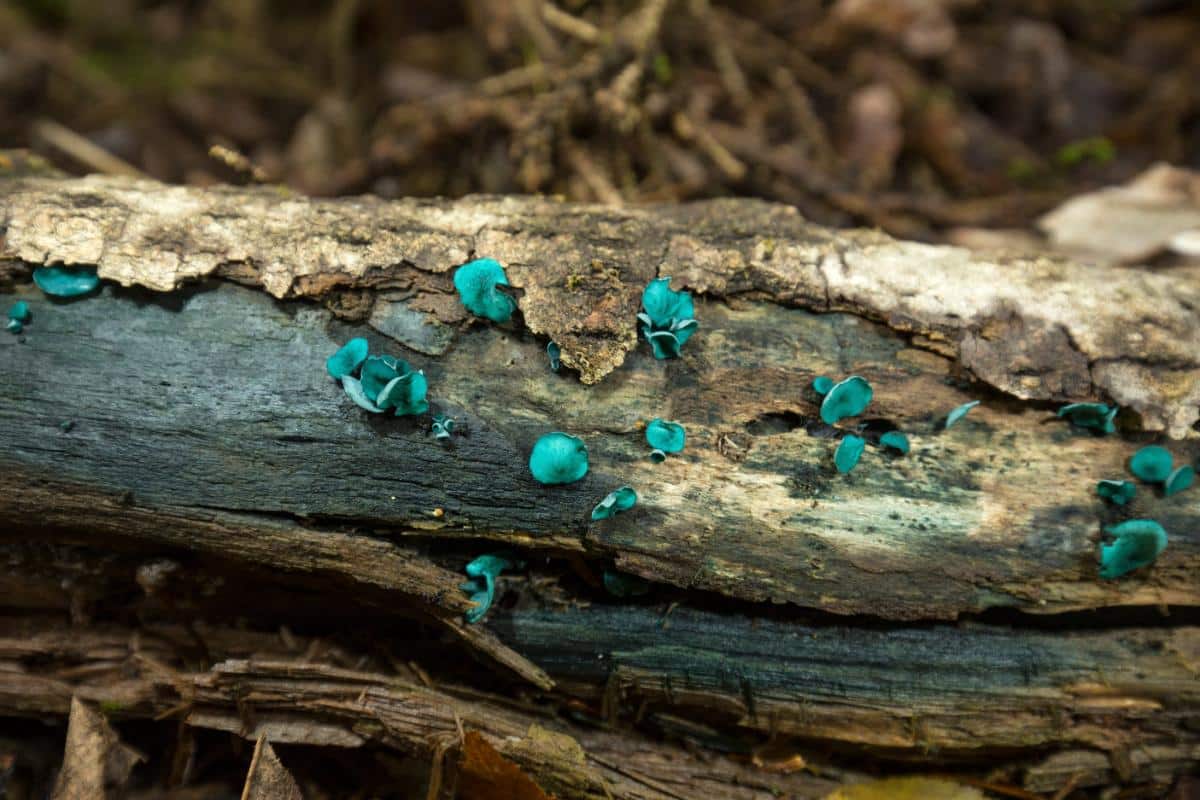
Jump to:
- All About Green Elfcup Fungi
- Green Elfcup Identification Guide
- Green Elfcup Lookalikes
- Edibility of the Green Elfcup
- Green Elfcup Wood Stain and History
- Green Elfcup Fungi and Xylindein Commercial Production
- Natural Dyeing With Green Elfcup Fungi
- Other Uses For Xylindein
- Common Questions About Green Elfcup Mushrooms
All About Green Elfcup Fungi
The green elfcup is a saprobic mushroom species belonging to the cup fungi group. It is renowned for its distinctive blue-green staining properties, which give decaying wood a fantastic color change. Both the fruiting bodies and the mycelium produce this special pigment. This means the fungus stains the interior of the wood it inhabits, a rare thing in the fungi world.
While the fruiting bodies of the green elfcup are not commonly found, the stained wood created by this fungus is easy to spot once you know what to look for. Still, this is one of the most commonly walked by fungi because it is so infrequently fruiting. All that is there is the greenish-blue wood as evidence of its existence.
The specific epithet aeruginascens is derived from Latin, meaning ‘becoming blue-green,’ a nod to the distinctive coloration it gives to wood. Over the years, it has been known by several synonyms, including Helvella aeruginosa and Chlorosplenium aeruginascens.
Woodworkers and artisans have been and still are captivated by the unique properties of green elfcup-stained wood. The wood stained by this fungus, known as “spalting,” has been utilized by craftsmen since the 14th century. A practice known as ‘intarsia,’ involves creating intricate inlays using different types of wood. The green-stained wood derived from the green elfcup was a prized material for this art form, adding a vibrant pop of color to the wooden masterpieces.
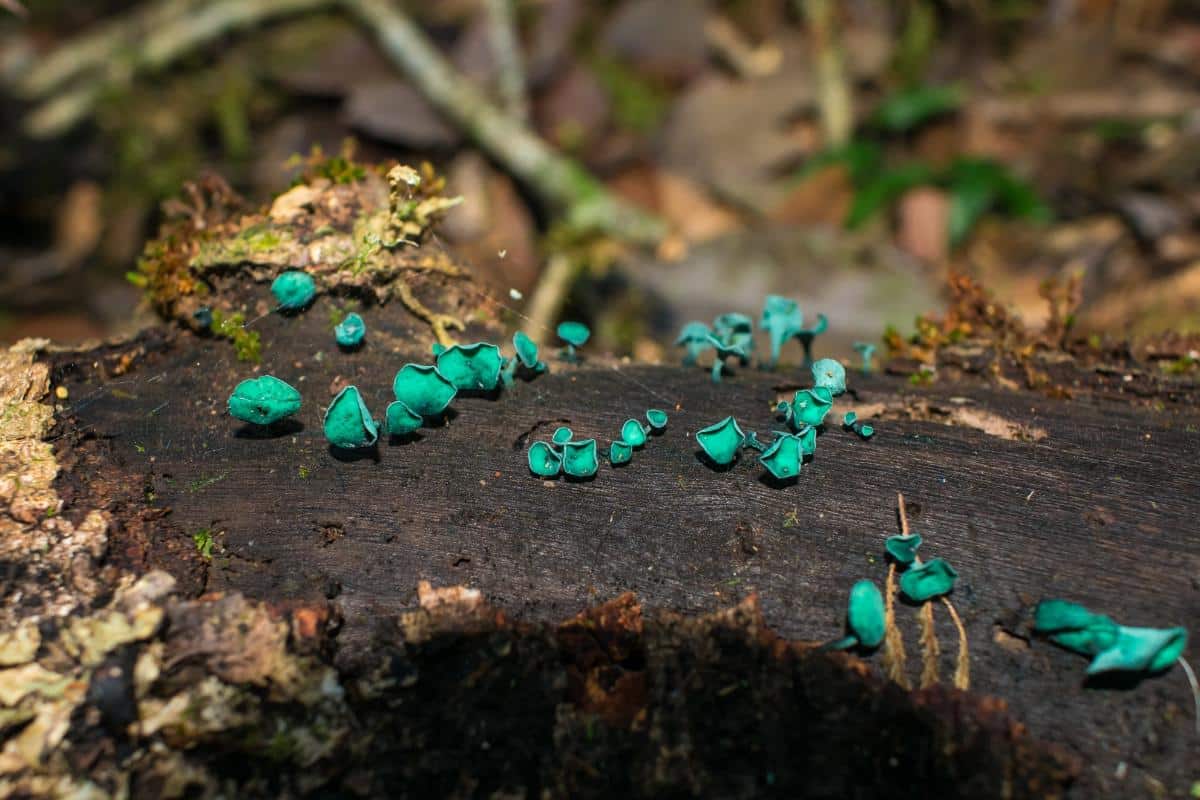
Green Elfcup Identification Guide
Season
While the green staining is visible year-round, the fruiting bodies typically appear in summer and fall.
Habitat
The green elfcup is saprobic, growing and taking nutrients from well-decayed, bark-free logs and sticks. It can be found on both hardwoods and conifers, but it prefers oaks. This fungus is widely distributed throughout North America and Europe.
Green elf cups grow only on wood, never from the ground. They fruit in large, dense clusters, often covering an entire log. It is more common to see the oddly turquoise-green dyed logs than the actual fruiting body of the mushroom. But, once you see the logs, you know the fungi is there.
It is believed that the pigment produced by the green elf cup is a stress response. When the mushroom is happy and healthy, it is white and fluffy. Standard theory suggests that the production of the pigment might be a way for the fungus to protect its food source from other organisms.
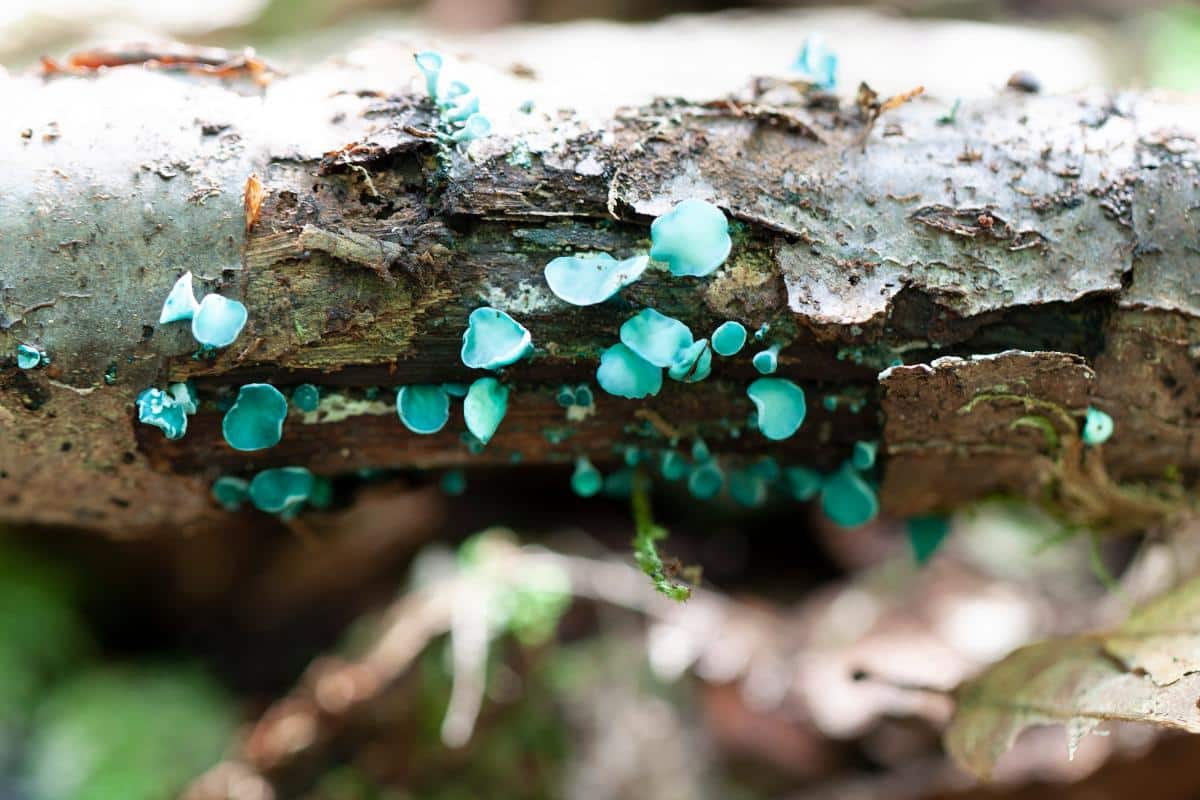
Identification
Cap
The green elfcup’s cap is cup-shaped, initially resembling a tiny goblet. As it matures, the cap becomes flattened or disc-shaped, with wavy edges. Individual fruiting bodies typically measure 0.2 to 0.5 inches in diameter—they’re very small. The upper surface of the cap is smooth and bright green to blue-green. The caps darken and disintegrate with age, leaving behind the stained wood as evidence of their presence.
Gills
The green elfcup does not have traditional gills like other mushroom species. Instead, its fertile surface is located on the upper part of the cap. This surface is smooth and has the same vibrant green color as the rest of the cap.
Stem
The stem of the green elf cup is tiny, measuring only 0.04 to 0.08 inches in length. It may be central or slightly off-center on the cap. Like the rest of the fruiting body, the stem is felty and pale blue-green, darkening with age.
Flesh
The flesh of the green elfcup is delicate and thin. It matches the color of the cap and stem, displaying the characteristic blue-green hue.
Odor
There is no distinctive odor.
Spore Print
The spore print of the green elfcup is white.
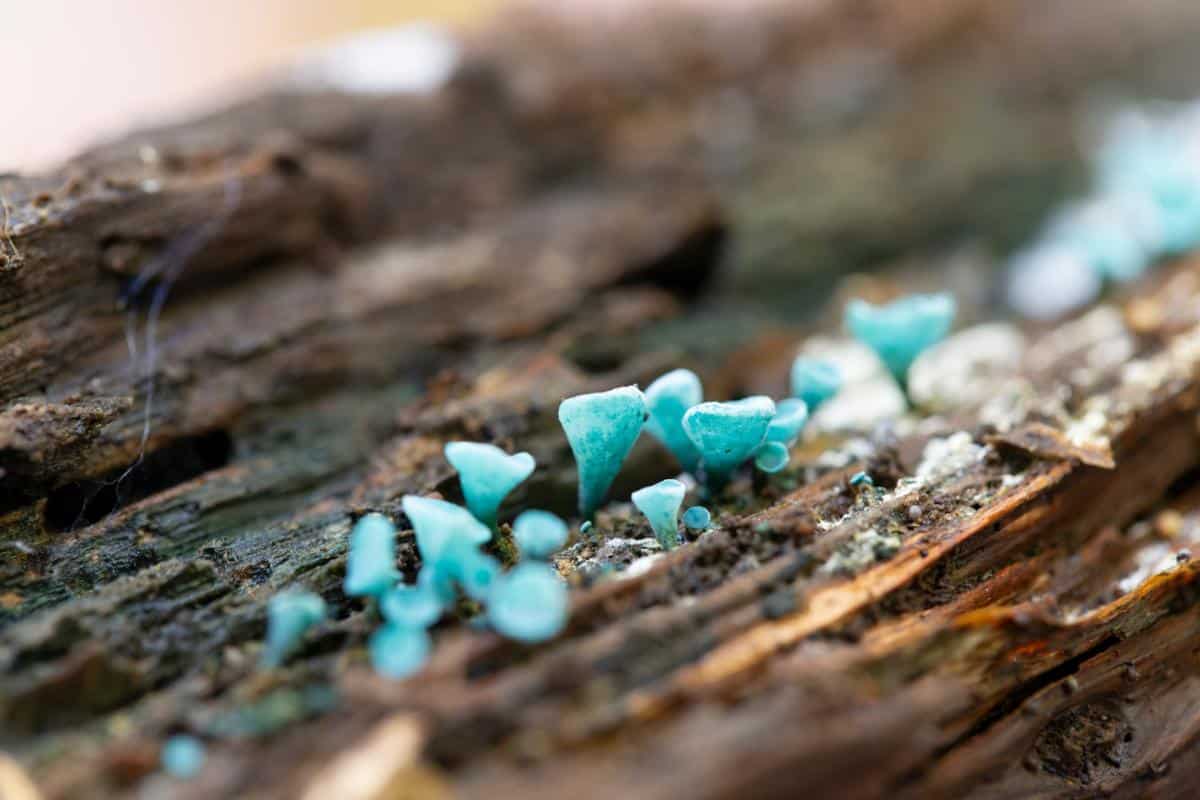
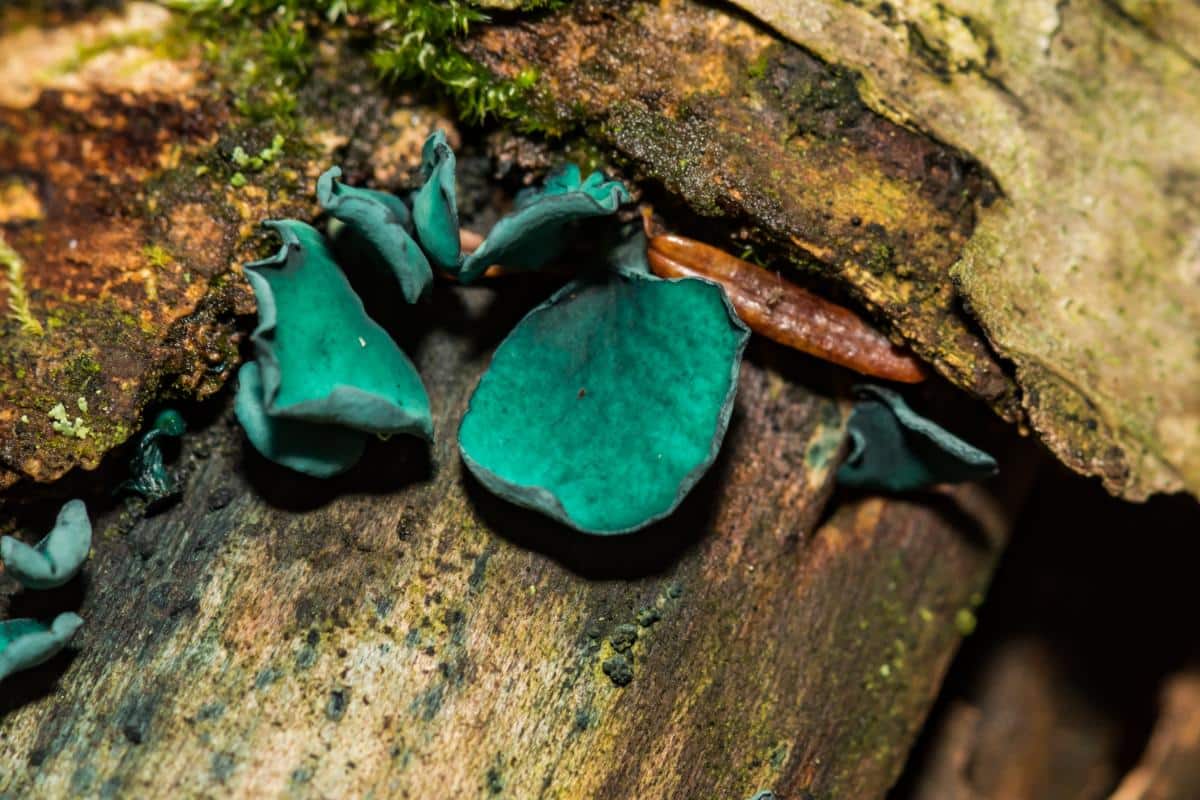
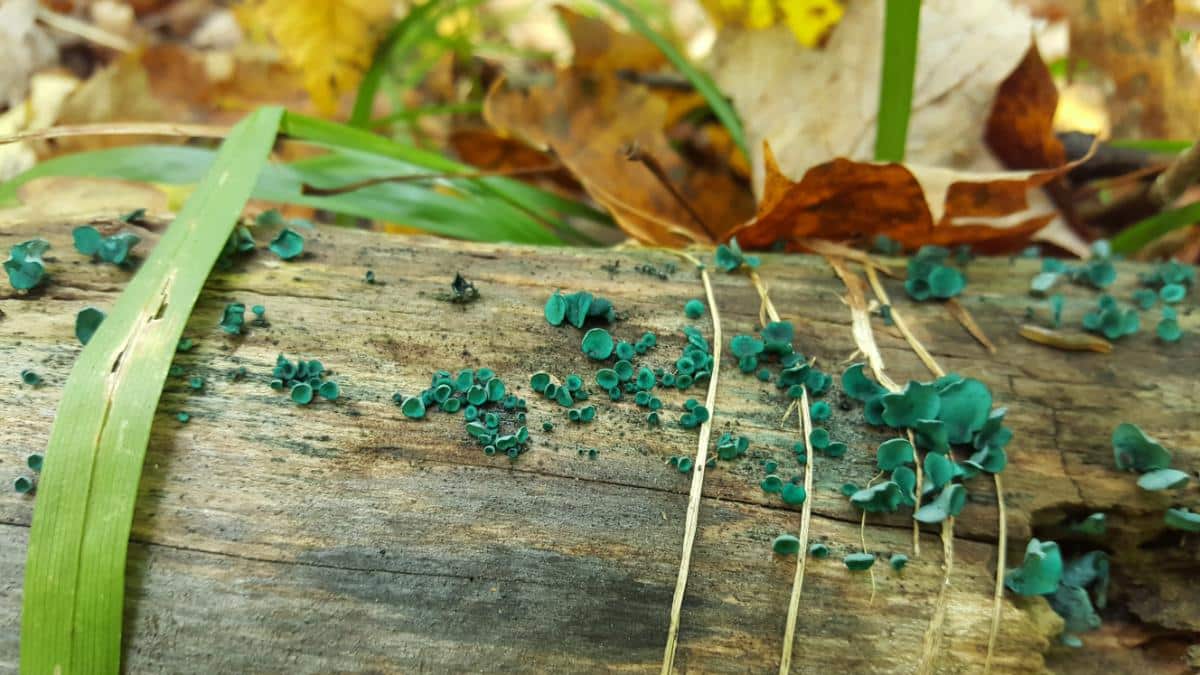
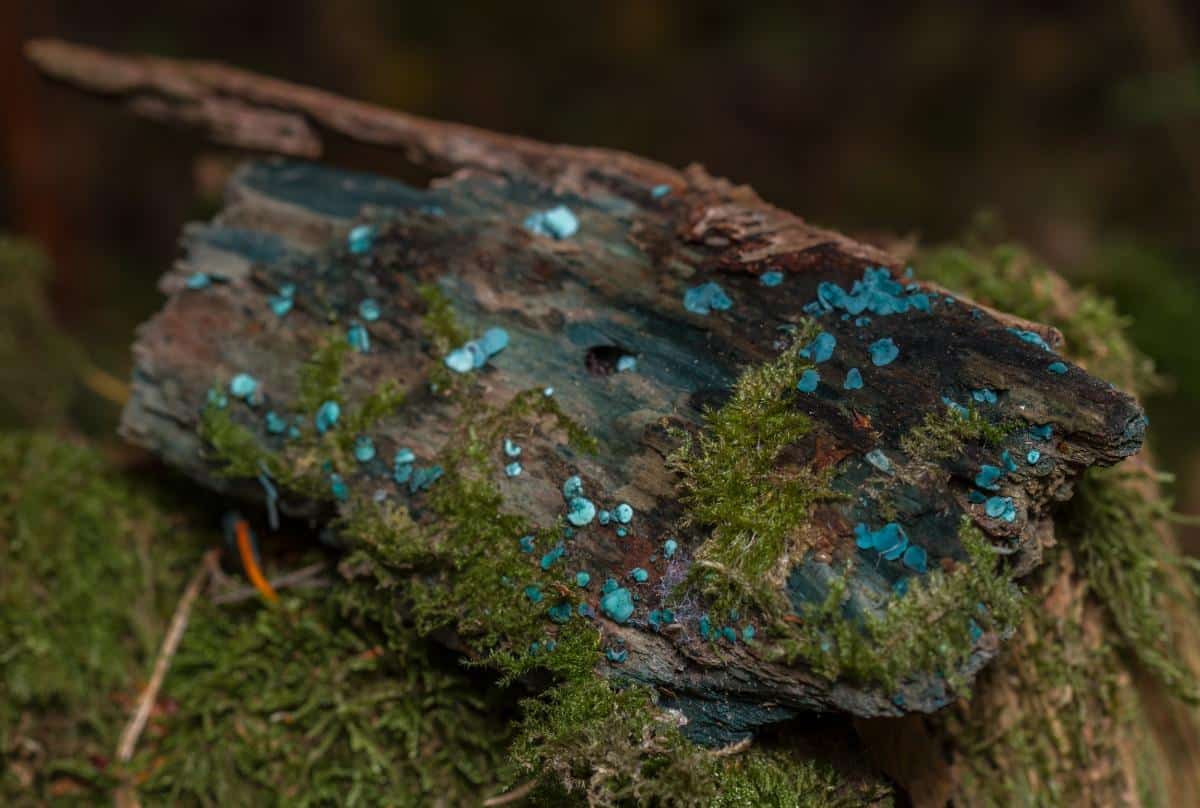
Green Elfcup Lookalikes
This mushroom does not have any close lookalikes. The brightness of the blue-green fruiting body, combined with the stained wood, are clear indicators of the species.
Edibility of the Green Elfcup
The green elfcup is considered inedible, primarily due to its small size and lack of substance. Also, it does not have a distinctive taste that would make it a desirable addition to culinary dishes.
Green Elfcup Wood Stain and History
Green elf cups produce a pigment, xylindein. This pigment production is part of the fungus’s secondary metabolism, distinct from its primary growth processes. The creation of this pigment is varied and dependent on ecological factors.
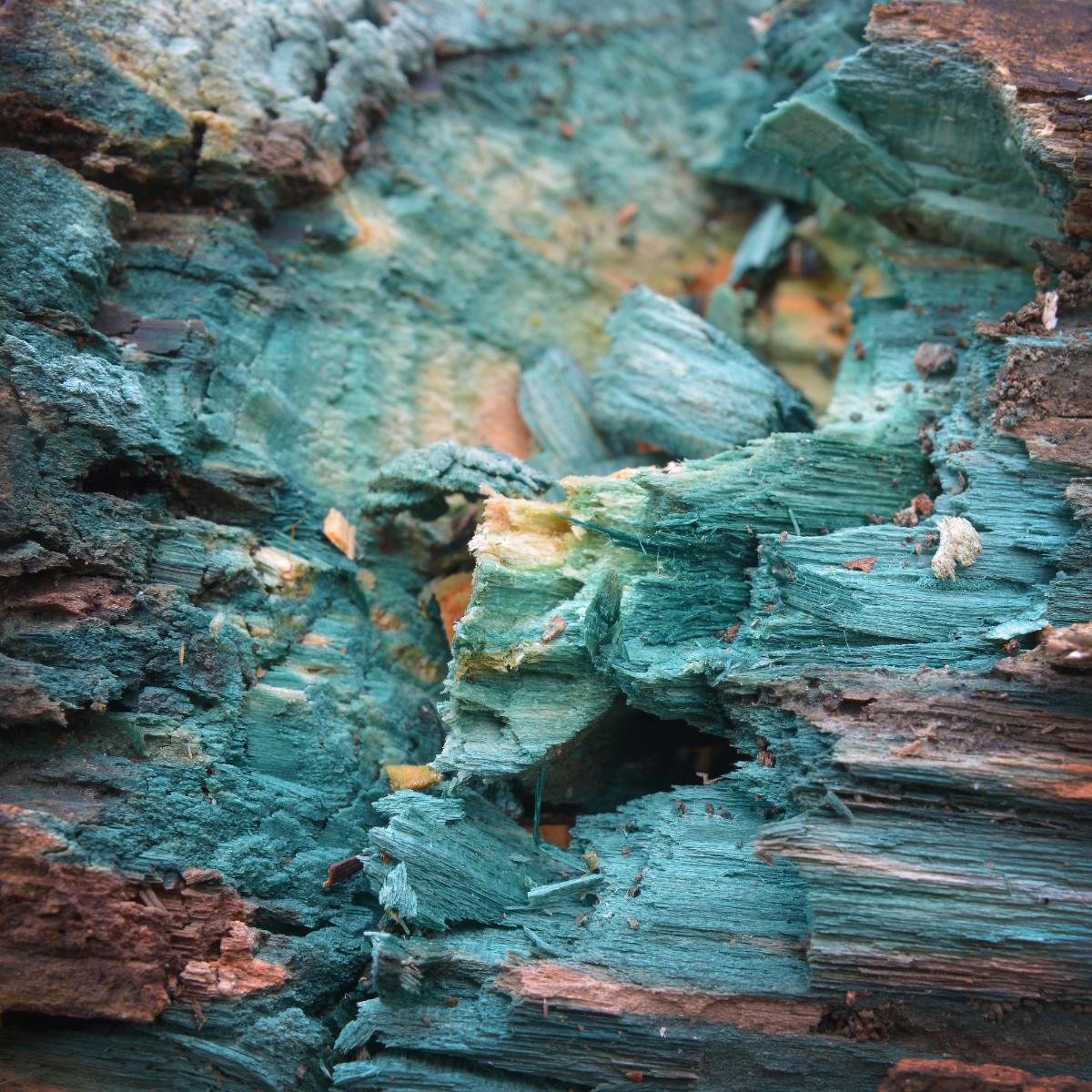
As a saprobic entity, the green elfcup aids in breaking down dead wood. However, it’s not classified as a ‘true’ wood decay fungus but may function as a soft-rot fungus. This means it can cause minor erosion in wood cell walls or colonize wood previously decayed by other fungi.
Factors such as temperature, pH, oxygen levels, and light intensity can significantly impact both the growth of the fungus and the production of the xylindein pigment. Research indicates that the presence of certain types of wood and the composition of the growth medium (e.g., high levels of glucose or sucrose) can stimulate both biomass growth and pigment production.
The blue-green stained wood, often called “green oak,” has been historically valued in decorative arts, including Tunbridgeware and Italian intarsia.
Tunbridgeware: A testament to the intricate craftsmanship of the 18th and 19th centuries, wood infected with Chlorociboria fungi was meticulously utilized in creating detailed, mosaic-like designs on boxes, picture frames, and trays. The green-stained wood added a splash of color and uniqueness to each piece.
Intarsia: In the 14th century, Italian artisans embraced the green-stained wood for intarsia, an inlaying technique similar to marquetry. This method involved fitting together pieces of wood stained in various shades, including the distinctive turquoise of Chlorociboria aeruginascens, to form elaborate images and patterns. The term “green oak” emerged in 15th-century Italy, specifically referring to oak wood stained by the Chlorociboria fungi.
In the Renaissance, the mysterious phenomenon of blue-stained wood was a source of intrigue and a coveted material for woodwork design and mosaics. Its unique coloration was seen as a gift from nature, elevating the aesthetic and price of any creation it graced.
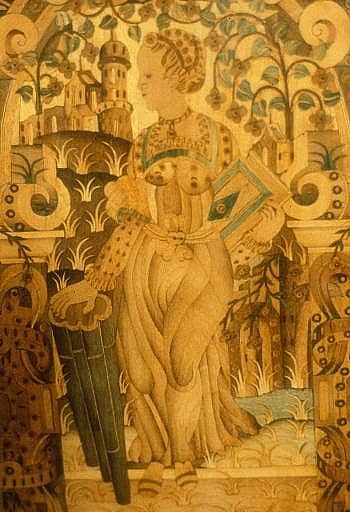
The green in this wood inlay is Chlorociboria aeruginascens infected wood.
This image is from Tom Volks mycology page; name and source of image unknown.
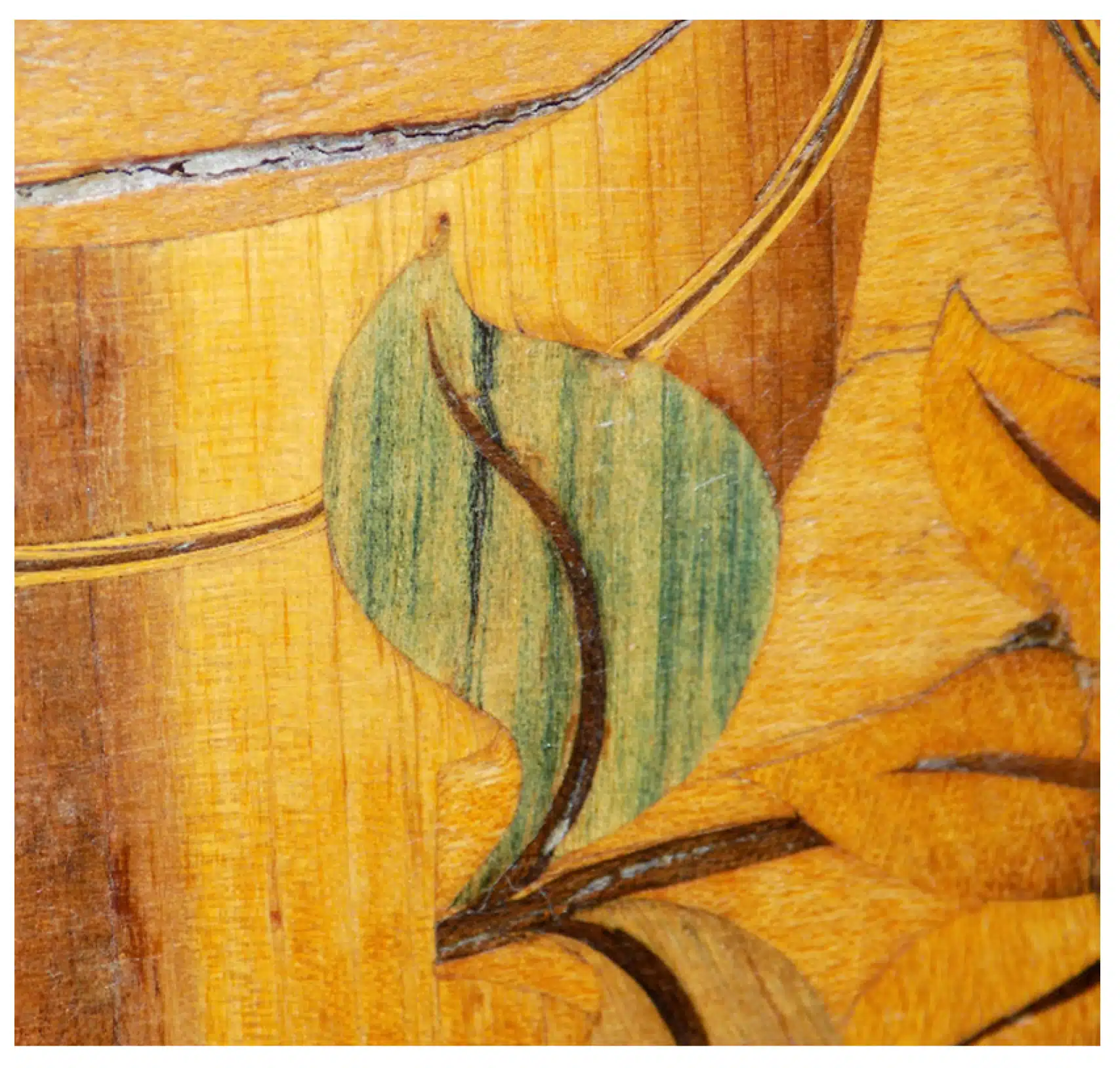
Detail of panel of the Ambassador Room’s door at the Royal Monastery San Lorenzo de El Escorial, Spain, 1562–1570. Made by Augsburg intarsiatore Bartholomew Weisshaupt. Photo: Royal Sites Spain.
Green Elfcup Fungi and Xylindein Commercial Production
Laboratory experiments with four isolates of C. aeruginascens on different types of wood (e.g., Acer saccharum and Populus tremuloides) revealed that all stimulated colony growth and xylindein production. Notably, ground wood was more effective than chopped wood in promoting growth, and spalted Populus tremuloides were particularly conducive to growth in three of the four isolates tested.
Stimulating growth and pigment production in laboratory conditions opens up possibilities for commercial and decorative use. Scientists are investigating growth conditions for wood colonization to develop methods for inoculating wood with stain and spalting fungi. This research aims to create ‘value added’ materials, enhancing the aesthetic and economic value of wood products.
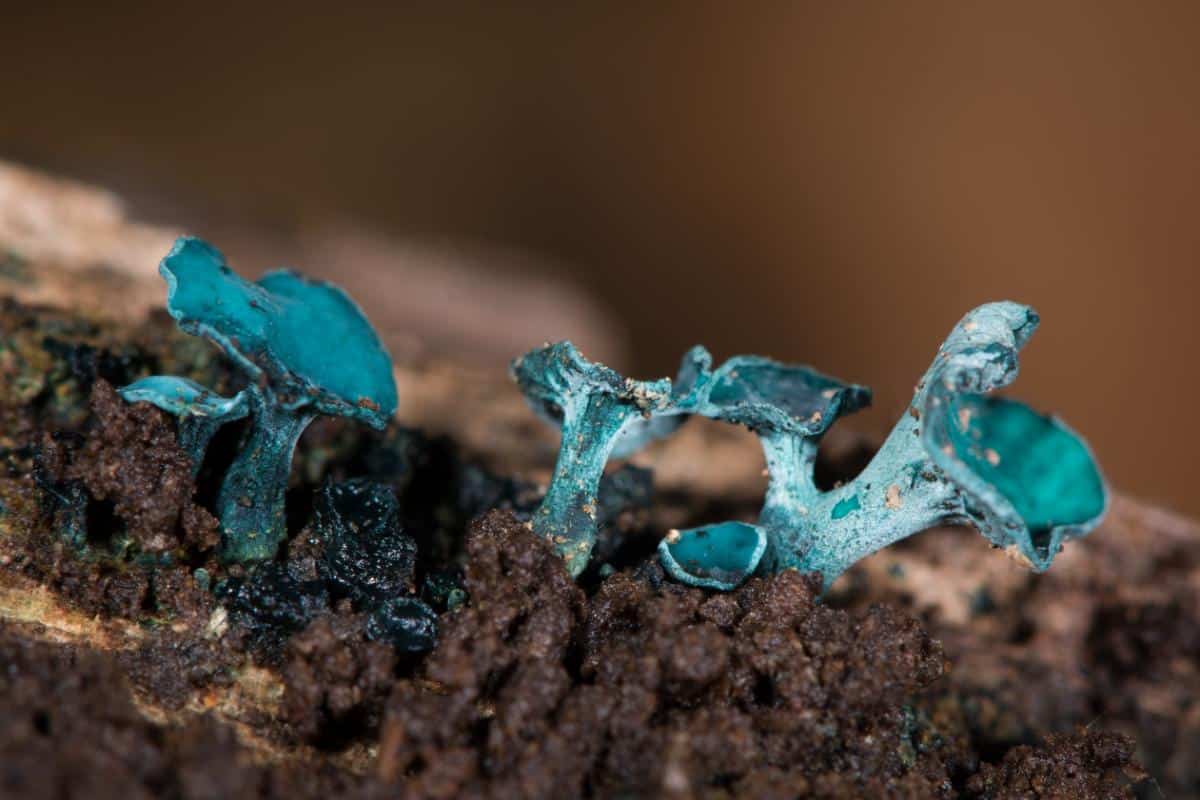
Natural Dyeing With Green Elfcup Fungi
The use of xylindein in silk dyeing has produced brilliant hues, marking the first time this pigment has been utilized in such a manner. This achievement not only showcases the potential for natural colorants in the textile industry but also ignites hope for sustainable practices in fabric coloring.
This article about using green elfcups in textile dyeing is fascinating.
Also, this research on using natural dyes made from green elf cups and chicken of the woods is inspiring.
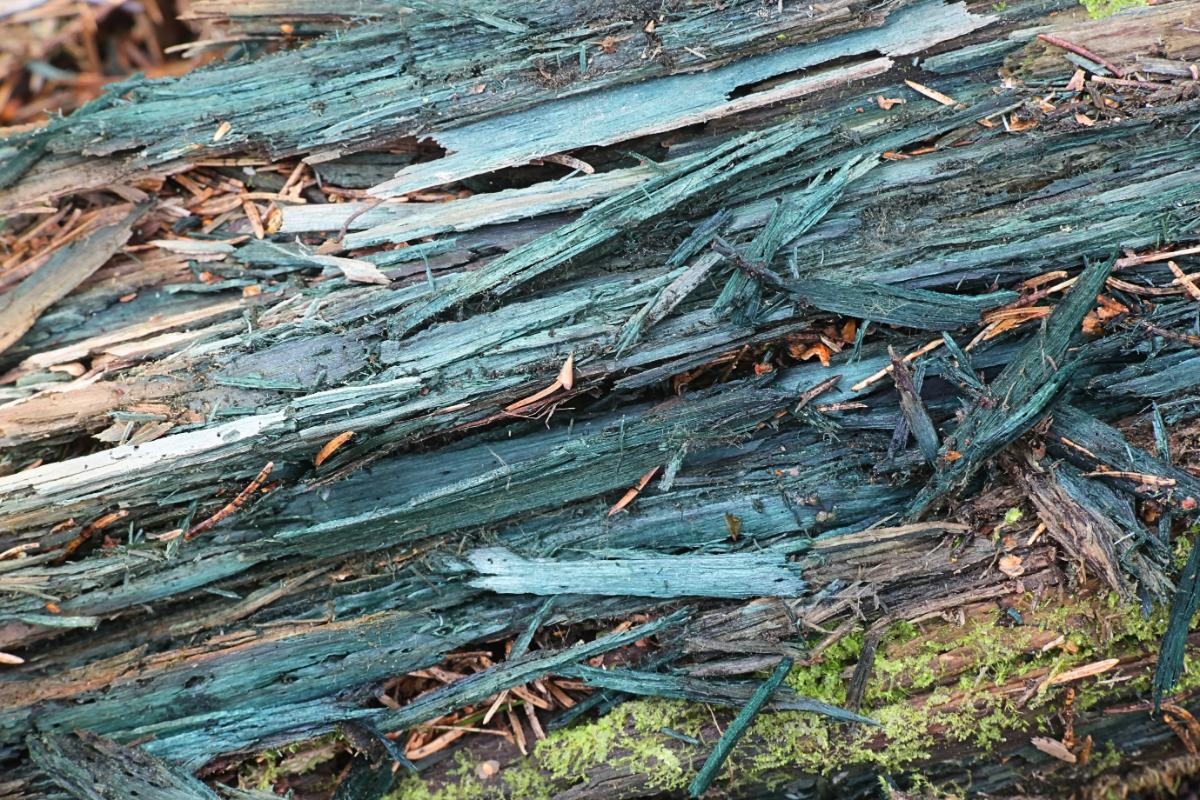
Other Uses For Xylindein
The allure of natural colorants like xylindein extends beyond the textile industry, finding potential applications in food and cosmetics. It is also being researched as a potential dye for oil and acrylic paints. The shift towards natural dyes is a step forward in creating a sustainable economy, reducing reliance on synthetic colors.
Beyond its aesthetic appeal, xylindein has shown a range of potential benefits. It can inhibit plant germination, making it a candidate for use as an algaecide. Also, it demonstrates repellent properties against termites and has potential cancer-fighting capabilities, though both of these still need lots more research.
This pigment has also captured interest for its potential applications in the veneer industry and as an organic semiconductor.
To learn more about xylindein, the current research, and possibilities, this article is fascinating: From Blue Pigment to Green Technology: Properties and Applications of Fungi-Derived Pigment Xylindein
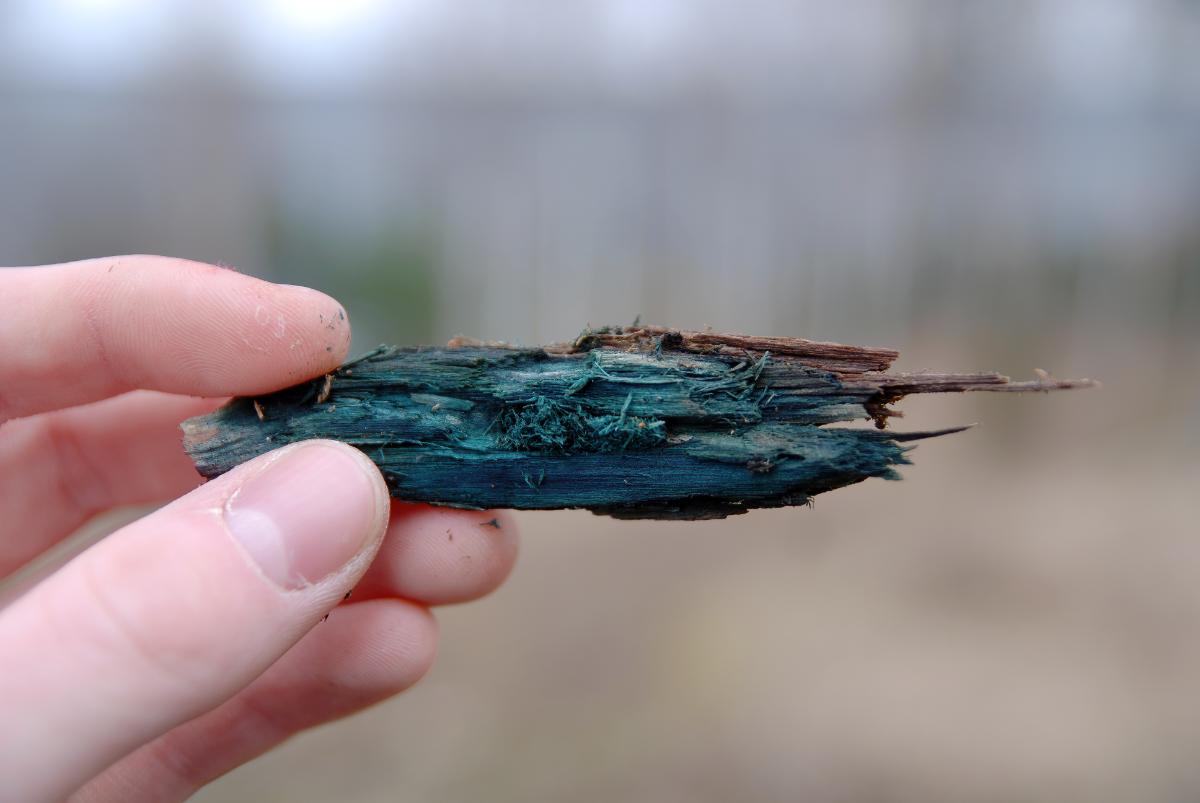
Common Questions About Green Elfcup Mushrooms
Can you eat the Green Elf Cup fungus?
While not toxic, the green elf cup fungus is not considered edible and should not be consumed.
What are the uses of Chlorociboria aeruginascens?
Chlorociboria aeruginascens, aka the green elfcup mushroom is a type of soft rot fungus notable for producing a blue-green pigment called xylindein. This pigment has captured interest for its potential applications in the veneer industry and as an organic semiconductor.
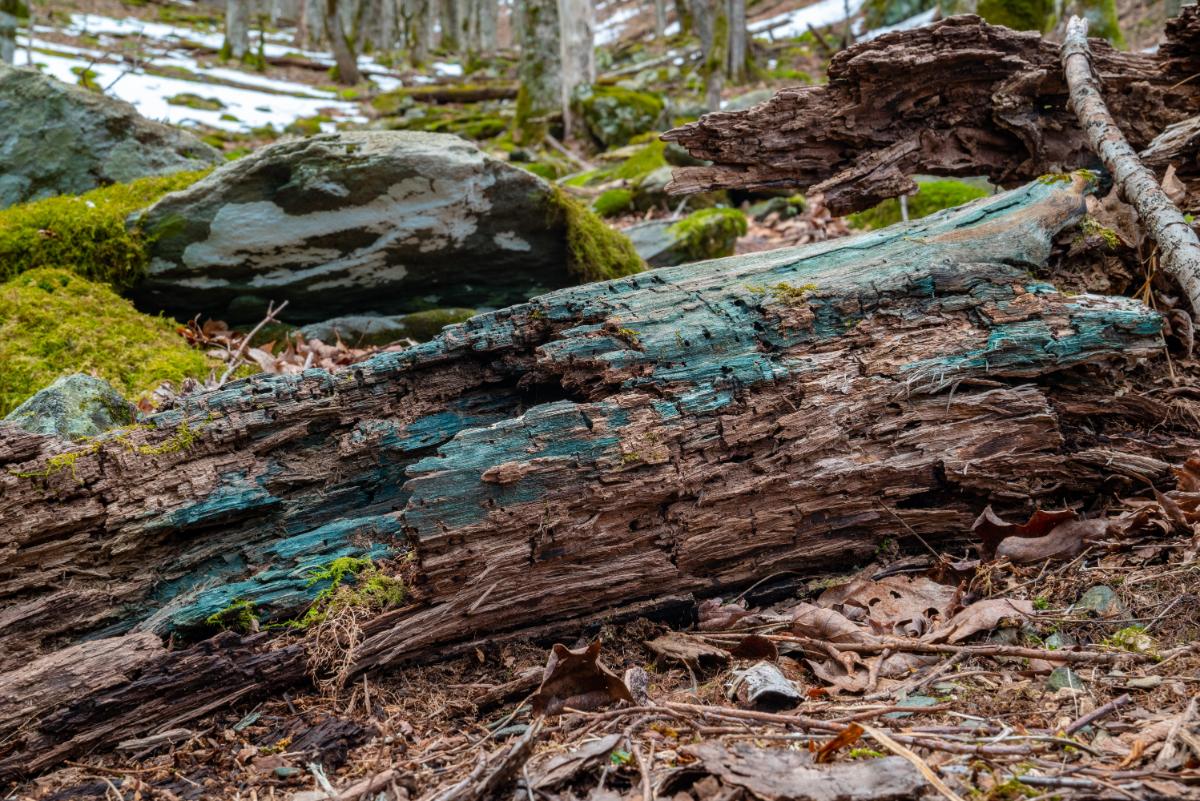





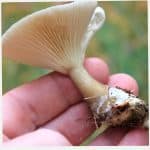

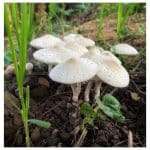
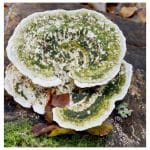
Georgia Binns says
Wow, thank you for the impressive and comprehensive information. I spotted the beautiful fruiting bodies of the Chlorociboria while hiking along the Dry Fork River in the Monongahela National Forest, West Virginia, August 22, 2025. The rotting wood was blue throughout with the beautiful and delicate tiny blue cups on the surface of the wood! I captured several good photos. The locals told me they call it Fire Wood, as it has phosphorescence properties and the wood glows in the dark!
Jenny says
Thank you for being part of this page :D. It’s very special when you find the fungus too! — they are very elusive and often all you see is the turquoise wood. As far as I know, they do not glow in the dark… wonder if the person was confusing it with something else.